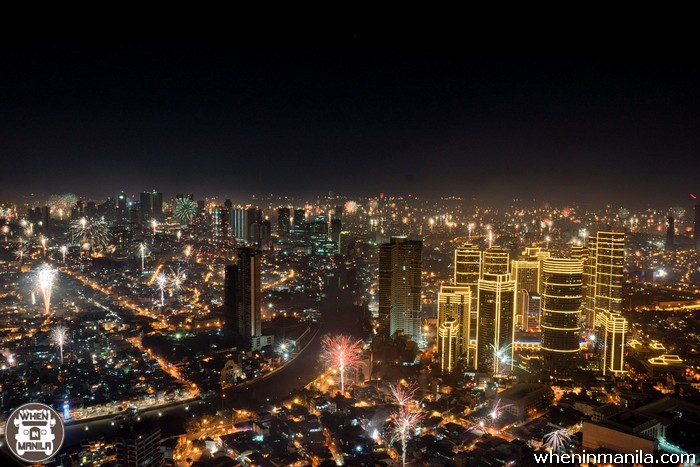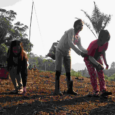New Year’s Eve 2014: Safety Tips And Advice On Forbidden Fireworks For The Loudest Night Of The Year
Over the last five years, an average of 1000 people per year have been injured by fireworks in the run up to, and during, New Year’s Eve celebrations in the Philippines. These injuries ranged from minor burns to live changing trauma and even death. Virtually all of these injuries are avoidable and below are a few safety tips to help you in celebrating an incident free start to the New Year.

Despite the Department of Health’s sincere efforts to reduce injuries brought on by fireworks, the number of incidents has been virtually the same over the last few years. This clearly indicates that fireworks are still popular, even if their use is being discouraged by the government. To make sure you get the right – and safe – kind of bang for your buck, you can start by checking what kind of firework you are about to buy or light up.
There are four different product classes which the Philippine Pyrotechnic Manufacturers and Dealers Association has been enforcing for around two years now, and all reputable firecrackers and fireworks should have this classification clearly displayed on the label:
Class 1: Products in this category are meant for indoor use, such as sparklers (luces).
Class 2: Products in this category require parental supervision and need to be ignited at least five meters away from bystanders. These products include smaller fountain type displays.
Class 3: Firecrackers in this category require spectators to be 25 meters away, such as super jumbo fountains.
Class 4: Products in this category are for use by professionals only, and are not to be sold to ordinary customers, as these fireworks require special training and handling to ensure safety.
This year, seven different firecrackers have also been declared illegal due to the explosive content in them being beyond what is allowed under Republic Act No. 7183. These are: Piccolo, Pop Pop, Goodbye Philippines or Crying Bading, Yolanda or Goodbye Napoles, Watusi, Giant Kuwitis and Pla-pla. The Piccolo in particular has been known as the one to have caused most injuries last year, with children being the most frequent victims.
There are a total of 68 manufacturers, 285 dealers, and 2,551 retailers of firecrackers who have acquired licenses from the PNP Firearms and Explosive Office (FEO), and who are selling legitimate firecrackers such as the Judas Belt, El Diablo, Baby Rocket, Sky Rocket or kwitis, Bawang or Paper Caps. Other Pyrotechnic products that may be used include Roman Candles, Sparklers, Butterfly, Trompillo, Fountains and Pailaw.
If in doubt, check if the shop or person you are buying from has a license.
Other, general advice for the loudest night of the year includes:
– Close all doors and windows of your home during New Year to prevent wayward fireworks from entering your house and causing a fire.
– Only buy legal fireworks and always read instructions carefully before using the fireworks.
– Never use fireworks while intoxicated.
– Store fireworks in a cool and dry place. Do not attempt to dry or light wet fireworks.
– Do not pick up unexploded fireworks.
– Consider wind direction and wind velocity before lighting fireworks. Do not fire if the wind is strong.
– Always use fireworks as intended. Do not dissect them or try to build your own. Some types of gunpowder and explosives can ignite when mishandled, even without a flame being present.
– Wear cotton or denims and avoid synthetic clothing like polyester, as this can be a bigger fire risk and leave more serious burns. Wear shoes and not slippers to protect your feet and wear long pants instead of shorts.
– Keep a bucket of water or a hose nearby to put out any fire immediately. If possible, make sure you know where the nearest fire extinguisher is located, that it is operational, and that you how to use it (Remember PASS: Pull – Aim – Squeeze –Sweep).
– Make sure pets and other animals are safe and avoid setting off fireworks close to them, as it can cause stress and injuries to animals and humans alike.
If you or someone you know suffers from health problems, particularly where breathing is concerned, then extra care should also be taken, and not only on the night but also during the first day of 2015. According to the Department of Environment and Natural Resources (DENR), on the first day of January 2014 the level of particulate matter with the size of 10 microns and below (or PM10) reached 1,437 micrograms per normal cubic meter (ug/Ncm) in places. This is almost 10 times above the guideline value of PM10 at 150 ug/Ncm and can make existing medical conditions worse, while also not being exactly healthy for anyone with fully functioning lungs. If possible, try and avoid physical activity outside on January 1.
It may sometimes seem like the various government agencies calling for restraint or even a ban when it comes to fireworks are nothing more than nanny state spoilsports, but the concern for people’s safety is genuine, as are the risks associated with handling explosives on the biggest party night of the year. Fireworks injuries are entirely avoidable without any real reduction in the enjoyment associated with the activity itself. It’s all about fun, and everyone can help in making NYE celebrations in the Philippines safer and more fun for all involved.
New Year’s Eve 2014: Safety Tips And Advice On Forbidden Fireworks For The Loudest Night Of The Year




